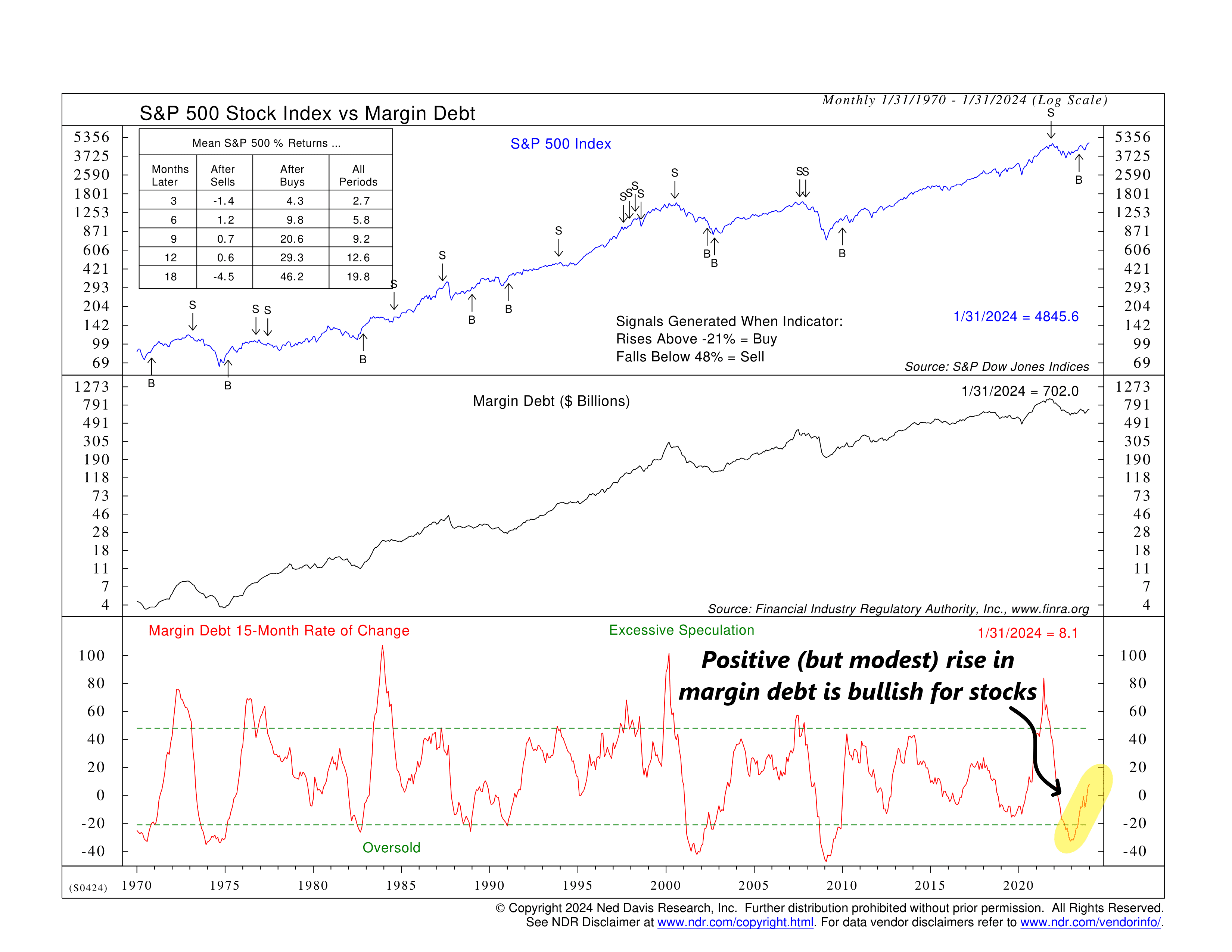
The focus of this week’s indicator is margin debt.
What is margin debt? In simple terms, it’s money that an investor borrows to purchase stocks. Think of it like a credit card for the stock market. It allows investors to amplify their returns, but there’s a catch – if the value of the borrowed stocks drops, investors might have to repay their loan early in what’s called a margin call.
Because margin debt is risky, we use it as a sentiment indicator. When it’s increasing from low levels, it suggests investors are taking more risks, usually leading to higher stock prices. On the flip side, a rapid decrease from high levels indicates a cooling of excessive speculation, which isn’t great for stock returns.
In our chart, we track the 15-month rate-of-change of margin debt (the red line). When it crosses above and then below the upper bracket (48%), it’s a “sell” signal, historically resulting in modest returns for the S&P 500 (blue line). Conversely, when it falls below and then rises above the lower bracket (-21%), it generates a “buy” signal, and S&P 500 returns jump significantly.
This is what happened most recently. The 15-month rate-of-change of margin debt dipped into oversold levels last year but has since reversed course, indicating a bullish scenario for stock returns.
We see this as an important data point. Despite concerns about the market’s rapid rise over the past few months, the relatively modest (but still positive) increase in margin debt suggests that investor risk-taking hasn’t reached excessive levels yet—and therefore, the stock market might just have some more gas left in the tank.
This is intended for informational purposes only and should not be used as the primary basis for an investment decision. Consult an advisor for your personal situation.
Indices mentioned are unmanaged, do not incur fees, and cannot be invested into directly.
Past performance does not guarantee future results.
The S&P 500 Index, or Standard & Poor’s 500 Index, is a market-capitalization-weighted index of 500 leading publicly traded companies in the U.S
